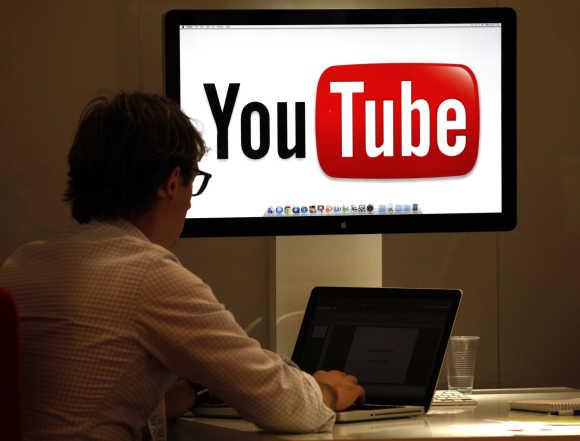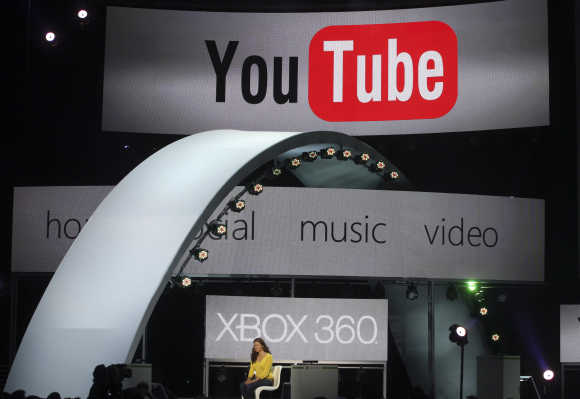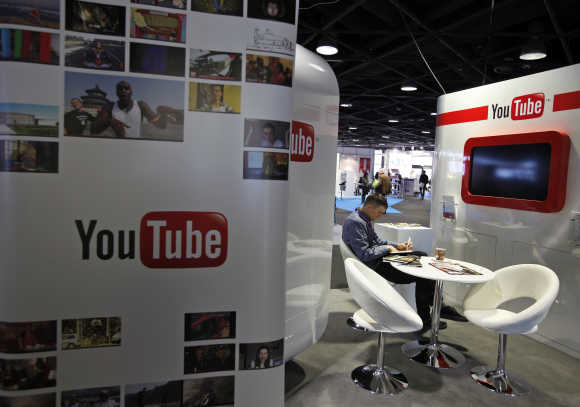 | « Back to article | Print this article |
YouTube to share revenue with creators
Video-sharing website YouTube will now offer original content creators a chance to monetise their work uploaded on the website without any prerequisites.
The programme is being rolled out in select countries like Australia, Canada, France, Germany, Japan, the United Kingdom and the United States at the moment. It will be expanded to countries like India over the next couple of months.
The website runs a YouTube Partner Programme, which was launched in India last September. It is YouTube's way of sharing advertising revenue with its most popular and successful video creators.
Click NEXT to read more...
YouTube to share revenue with creators
Once a video creator has been initiated into the programme advertisements start appearing overlaid or next to their videos. YouTube then splits the revenue generated through advertisements with the partner.
However, there were a few strings attached. The videos needed to generate a certain amount of traction or get a specific number of views, before a partner could enroll in the programme. Also, the content had to be uploaded regularly.
Tom Pickett, global director, content operations and online creators, YouTube, said: "That's the old model. Now, we are throwing it open to anyone who wishes to create original content and earn money.
Click NEXT to read more...
YouTube to share revenue with creators
"There will be no requirements of approaching us to sign up for any programmes or even meet any threshold in terms of views." He adds that creators should now just concentrate on putting up great content and building a loyal audience and generate viewership.
Currently, YouTube has a partner community of over 20,000 globally, which is expected to grow rapidly once the current entry barriers to the programme are removed.
What's more, the website claims there are hundreds of partners who make more than $1,00,000 every year and thousands who make in excess of $1,000 per month.
Click NEXT to read more...
YouTube to share revenue with creators
"My goal is to create thousands of people who consider YouTube their main source of income," says Pickett.
While YouTube executives decline to put a number on the average earnings of partners in India, they say that after factoring in the income levels of the country and the average salaries earned in India, it is found that users are making more than what an average professional or graduate makes per month.
Also, the website feels that space has tremendous potential in India, with categories like technology blogging and reviews, independent artistes and housewives gaining popularity.
Click NEXT to read more...
YouTube to share revenue with creators
Here's another piece of statistics to reinforce YouTube's faith in the market: a 250 per cent growth in revenues from user generated content since its launch last year.
One question: Though every creator may want to monetise his/her content, what happens if there is no traffic or page views. The math will be complicated and so will be the calculation of revenue sharing, says Pickett. Besides, it is possible that advertisers may have their own parameters for fixing the costs.
One way to tackle it would be to create clusters of sorts. For instance, say cookery videos are very popular in India. Many users regularly put up videos in this space.
Click NEXT to read more...
YouTube to share revenue with creators
Now, the advertiser who comes on board may advertise across this category, paying YouTube per view for each video. Simply put, if video X video generates just 10 views, the revenue will be 10 multiplied by the per-view amount is decided.
If video Y generates 500 views, the revenue earned would be that much higher. Advertisers feel the cluster logic may work as it would help build focused categories and expand viewership across the segment.
But, of course, it would be frowned upon by ones looking for niche audiences or a more targeted advertising approach.






